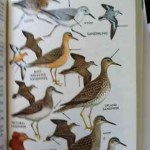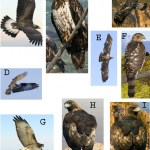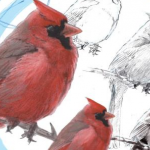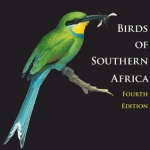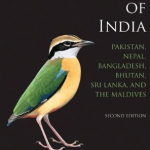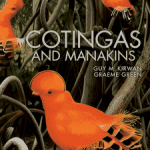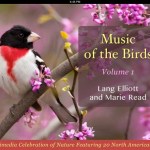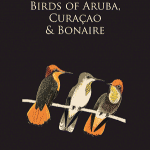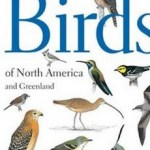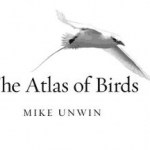Books-Birds
A couple of years back, the The Crossley ID Guide for Eastern Birds came out and it caused a huge splash in the birdwatching world. For some time now it has become apparent that bird watching, especially the identification part of it, was changing in its approach. We describe it this way, though I think the reality is more complex: In the old days we used logical links to known reliable field marks to turn carefully made field observations into species identifications of varying degrees of certainty. Now, a new approach has been developed where we look at the whole bird and get an…
You’ve heard of the The Crossley ID Guide: Eastern Birds (The Crossley ID Guides). It is a revolutionary new way to assemble a field guide, where each page has a drawing of what it would look like if suddenly outside your living room there was a full blown habitat for some species of bird, with individuals from that species flying or sitting all over the place in different positions, doing different things, and at different distances. These pages in the field guide almost give you the experience of having seen many of this partiuclar species of bird, like you were suddenly an experienced…
The Crossley ID Guide: Raptors is just now coming out. I was able to spend a little time with it a few weeks ago, though my official copy has not arrived yet. But Princeton (the publisher) is organizing a major blog hoopla over the publication of this new book, and I've signed on to participate. Starting yesterday a number of bird-related blogs are producing posts related to this book. My post comes out next Tuesday and it will consist of a quiz, a bird quiz. Anyone who gets the quiz right will be eligible for random selection, and whoever gets randomly selected will be hooked up with…
The Jewel Hunter by Chris Goodie is the story, generally chronological, of one man's quest to observe, in nature, every known species of a rare and typically elusive bird: the Pittas. Oh, and all in one year. For a birder, this is the rough equivalent of buying some impossible to pay for sports car as a symptom of midlife crisis. It required being bitten by leeches and scared by snakes.
The Pittidae is a family of songbirds distributed in the Old World, mainly in Asia and Australia, but with a few species in Africa.
They tend to live in rain forests or at least, denser woodlands and…
Tired of merely watching birds? Ever consider trying to draw them? There's a method to do so. John Muir Laws is very good at this and he's written a book that can help you get started, maybe even become good at it yourself:Laws Guide to Drawing Birds .
In case you were wondering, Laws' name does not connect him genealogically to the famous John Muir; his parents named him that. But apparently, there is a connection between names and what people do, and John Muir Laws is in fact a naturalist.
This book covers all the usual methodology of illustration but with birds. There are a gazillion "…
This is a summary of several of the better books I’ve had the opportunity to review here, organized in general categories. This is written from a North American perspective since most of my readers are North American (though many of you live to the west of the “Eastern Region” … but you probably know that). So, when not specified, a book with a regional focus is likely to be for that area, and the “Outside the US” section is labeled thusly.
Everybody needs a basic field guide. If you need more than one field guide because you are a family of birders, or because you like to keep one in the…
I liked Chickens: Their Natural and Unnatural Histories by Janet Lembke even if it is annoyingly unscholarly in places where it should be (assertions of fact are frequently made with zero or poor referencing). As far as I can tell, the writing is accurate in its coverage of all things Chicken. Chickens in science, chickens in stories, chickens in the back yard, chickens in history, chickens in evolution, chickens in art, chickens in mythology, chickens in medicine, chickens in Medieval times, chickens in Renaissance times, chickens all the way down.
If you are a chicken person you should…
I've been interested in Animal Navigation for years. I've always been interested in things like orientation and maps and so on, but it was when I started working with the Efe Pygmies in the mid 1980s, and noticed that there were some interesting things about how they found their way around in the rainforest, that I started to track and absorb the literature on the issue. Back then, there were a few researchers who felt that some animals, possibly including humans, had built in navigation equipment, possibly using magnetics. Some of those researchers oversimplified their models and took the…
Are you interested in birding but don't really know much about it? Did you just put a feeder outside and noticed that birds are interesting, or did you finally get around to stopping at that wildlife refuge you drive by every week on the way to the casino and realize that walking down to the swamp to look at birds and stuff is both better exercise and cheaper than playing slot machines for nine hours straight? Or have you been birding in a casual way for a while, using your Uncle Ned's old binoculars and a tattered and torn Peterson you found on the sale table at the library, and want to…
There are several things you need to do to be a better birder. Some of these things can be handled by just tossing money after the problem. Better binoculars, more books, that sort of thing. If you use those tools well they will improve your abilities as a birder. But the most important thing you can do is probably to
consciously want to improve yourself and to go and learn stuff pertaining to that. And, to do that, knowledge is important bus so is approach, perhaps methodology is a good word.
There really are three or four aspects to being a better birder that could be viewed very…
When traveling and working in South Africa, I've always used Newman's guide to the birds of Southern Africa, and more recently, I found the Sasol guide to be helpful as well. (I discuss both briefly here.) Now, I've got on my desk a copy of Princeton's Birds of Southern Africa: Fourth Edition by Ian Sinclair, Phil Hockey, Warwick Tarboton and Peter Ryan. You will know Sinclair from his South of the Saraha bird guide.
All three books cover about the same species, as far as I can tell (just under 1,000) and have a similar range of illustration and information. They all have overview…
Let's look at Birds of India: Pakistan, Nepal, Bangladesh, Bhutan, Sri Lanka, and the Maldives (Second Edition) (Princeton Field Guides):
The best field guide to the birds of the Indian subcontinent is now even better. Thoroughly revised, with 73 new plates and many others updated or repainted, the second edition of Birds of India now features all maps and text opposite the plates for quicker and easier reference. Newly identified species have been added, the text has been extensively revised, and all the maps are new. Comprehensive and definitive, this is the indispensable guide for anyone…
Kazakhstan, Turkmenistan, Uzbekistan, Kyrgyzstan, Tajikistan, Afghanistan ... they all have birds, it turns out. Until now there has never been a field guid to the birds of this regino. Raffael Aye, Manuel Schweizer, and Tobias Roth have written one, and it is called, fittingly, Birds of Central Asia: Kazakhstan, Turkmenistan, Uzbekistan, Kyrgyzstan, Tajikistan, Afghanistan.
It covers 618 species using 143 plates with multiple birds on a plate, set up in classic Peterson Field Guide format with the range maps right with the bird descriptions across from the illustrations. The…
Five families of birds make up the group that could be referred to as the Cotingas and Manakins, which in turn include species with such colorful names as "Pale-bellied Tyrant-Manakin," "Bare-necked Fruitcrow," "Peruvian Plantcutter," and "White-browed Purpletuft." And certainly, you've heard of the Andean Cock-of-theRock. These birds and their relatives are THE famous colorful amazing birds of the Neotropics, the birds people who go to the Jungles of Central and South America go to see. "... the song of the Xcreaming Piha,... the loudest bird on Earth, is used by moviemakers to epitomize…
Music of the Birds by Lang Elliott is a classic book and CD combo well over 10 years old, that provided bird lovers with a chance to learn to identify and appreciate the songs of numerous species. Over the last decade or so many other CD-based bird song offerings have become available. More recently, Lang teamed up with Marie Read to produce an iBook (iAuthored) version of Music of the Birds which takes advantage of the iAuthored iBook format in many ways. This is my first review of an iAuthored book, and obviously the first one on this blog, so I want to use the opportunity to discuss what…
If you are a birder and you are going on Spring Break (from the US), don't forget that there are birds where you are going. And, probably, there are bird books that cover your destination.
One of the really cool things about North American birding is that when you do go down to tye Yucatan, Caribbean, or Central America you'll see birds that are migratory and familiar, but in their other home (but just on their way back). They'll be surprised to see you!
I just got a copy of Birds of Aruba, Curaçao, and Bonaire, though I've got no personal travel plans for Aruba and environs at the moment…
Did you know that there is an entire group of birds called "Tube Noses" because they have tubes on their noses? Well, to be more exact, the term is "tubenoses" and the noses are beaks. The tubes are tubular nostril-like thingies that most (all?) birds have which are extra tube-like in the tubenoses. Thus the name.
Albatrosses, petrels, and storm-petrels, which includes shearwaters, make up the tubenoses, and the newly produced book Petrels, Albatrosses, and Storm-Petrels of North America: A Photographic Guide is about the North American species of this order, scientifically known as the…
Wildlife of Southern Africa , by Martin Withers and David Hosking, is new (August 2011) and good. If you are planning a trip to South Africa, Namibia, Botswana or anywhere nearby, or if you live there and like to go to the bush sometimes, consider it.
This is a pocket guide, it is small, has good photographs, is inexpensive, and accurate.
In my opinion, if you are travelling around Africa looking at wildlife, you will need a set of more specialized guides (which I've discussed at length elsewhere on this blog, see below), but this is a good extra to carry along or to have handy, depending…
Face it. Half the time ... most of the time, really ... you use your Peterson (or some other favorite "field guide") as a checklist. You see a bird and you pretty much know in your head what it is, but you need to look it up to see what the three or four similar ducks or woodpeckers or whatever are in your area in order to be sure that it is a Common Merganser or a Red Headed Woodpecker or whatever. All you need is a basic picture (drawing preferred for this sort of thing) the names of the birds and basic range maps.
That is the role played by the Princeton Illustrated Checklists; These…
How are birds related to dinosaurs, crocodiles, and pterosaurs? Where do birds live, and not live? How many bird species are there, and how many actual birds, and how does this vary across the glob? What about endemics?; Where ate the most local species found? Mike Unwin's The Atlas of Birds: Diversity, Behavior, and Conservation covers this and more in a richly illustrated detailed global survey of Aves.
This new and very impressive, and highly accessible volume covers bird biogeography with an overview of counts and diversity followed by a continent-by-continent review, to give you an idea…
